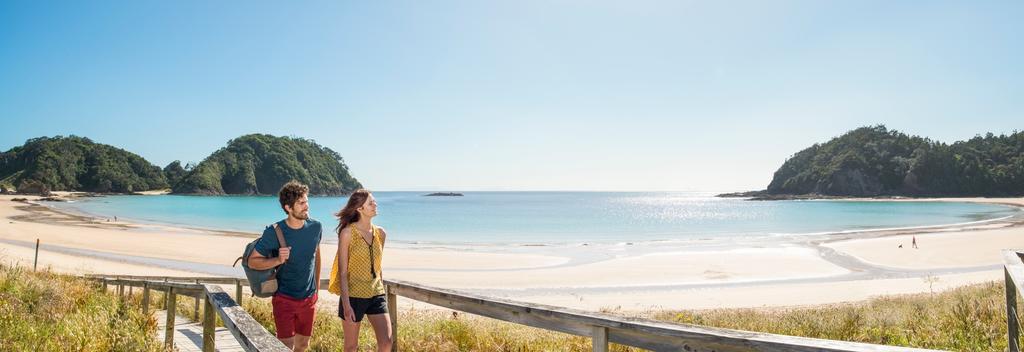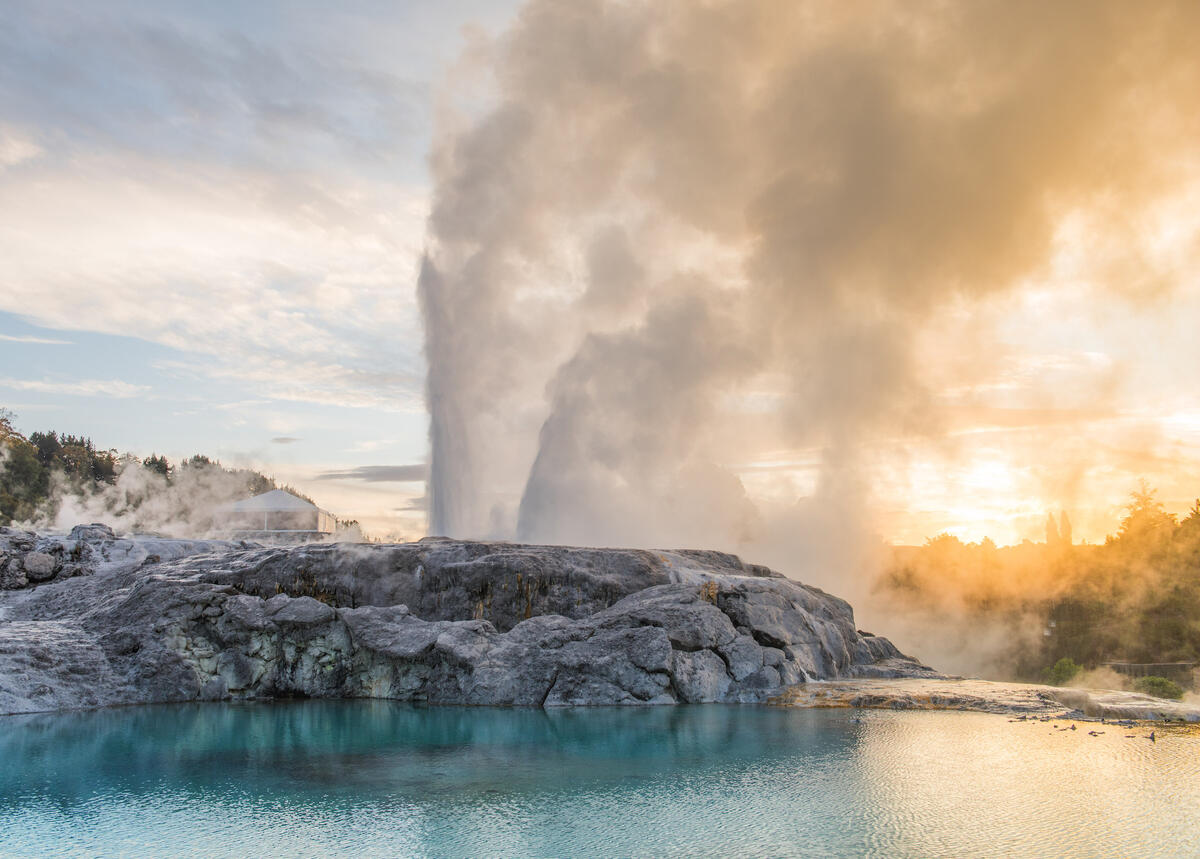-
Popular places to visit
Popular things to do
Helpful tips
Here's a few useful links to help with planning your trip to Aotearoa New Zealand.
-


You'll find a variety of awesome landscapes in New Zealand, all within easy reach of each other.


Spectacular glaciers, picturesque fiords, rugged mountains, vast plains, rolling hillsides, subtropical forest, volcanic plateau, miles of coastline with gorgeous sandy beaches - it’s all here. No wonder New Zealand is becoming so popular as a location for movies.
Lying in the south-west Pacific, New Zealand consists of two main islands - the North Island and the South Island. Stewart Island and many smaller islands lie offshore.
The North Island of New Zealand has a 'spine' of mountain ranges running through the middle, with gentle rolling farmland on both sides. The central North Island is dominated by the Volcanic Plateau, an active volcanic and thermal area. The massive Southern Alps form the backbone of the South Island. To the east of the Southern Alps is the rolling farmland of Otago and Southland, and the vast, flat Canterbury Plains.


The Mangaotaki Rocks, near Piopio, featured in The Hobbit: An Unexpected Journey as Trollshaws Forest
New Zealand's oldest rocks are over 500 million years old, and were once part of Gondwanaland. This massive super-continent started to split up about 160 million years ago, and New Zealand separated from it about 85 million years ago.
New Zealand sits on two tectonic plates - the Pacific and the Australian. Fifteen of these gigantic moving chunks of crust make up the Earth's surface. The North Island and some parts of the South Island sit on the Australian Plate, while the rest of the South Island sits on the Pacific. Because these plates are constantly shifting and grinding into each other, New Zealand gets a lot of geological action.


Visit Te Puia to experience the might of the iconic Pohutu Geyser that erupts up to 20 times a day, spurting hot water up to 30m skyward.
This subterranean activity blesses New Zealand with some spectacular geothermal areas and relaxing hot springs, as well as providing electricity and heating in some areas. Rotorua is the main hub for geothermal attractions, with plenty of mud pools, geysers, and hot springs in its active thermal areas — not to mention its trademark ‘Sulphur City’ smell. First settled by Maori who used the hot springs for cooking and bathing, Rotorua soon attracted European residents. The reputed health benefits of its hot pools quickly earned the area the name of ‘Cureland’.
Beyond Rotorua, you can enjoy hot springs and other thermal activity in most regions of the North Island north of Tūrangi, as well as in Hanmer Springs and the West Coast in the South Island.


At low tide, when you can walk the length of Wharariki Beach past enormous sand dunes, rugged rocks and beautiful scenery.
New Zealand has over 15,000 kilometres of beautiful and varied coastline. In the Far North and on most of the East Coast of the North Island you’ll find long sandy beaches perfect for swimming, surfing and sunbathing. The North Island’s west coast has dark sandy beaches, with sand heavy in iron. The north of the South Island has some beautiful sandy beaches, while the coastline around the rest of the South Island tends to be wilder and more rugged.


Hot air ballooning over Canterbury
About a fifth of the North Island and two-thirds of the South Island are mountains. Stretching from the north of the North Island to the bottom of the South, these mountains are caused by the collision of the Australian and Pacific Plates.
Over millions of years, alluvial deposits (eroded from the mountains by rivers) formed the vast Canterbury Plains in the South Island and a number of smaller plains in the North. These alluvial plains contain some of New Zealand’s most fertile and productive farmland.

On the South Island's West Coast you can find ancient glaciers that extend almost to the sea.
New Zealand’s Southern Alps have a number of glaciers, the largest being Tasman glacier, which you can view by taking a short walk from Mount Cook village. New Zealand’s most famous glaciers are the Franz Josef and Fox on the South Island’s West Coast. Gouged out by moving ice over thousands of years, these spectacular glaciers are easily accessible to mountaineers and hikers. You can walk up to the glaciers or do a heli-hike — fly up by helicopter and walk down.


One of the most dramatic and stunning parts of New Zealand Fiordland is a mix of fiords, waterfalls and snow-capped mountains.
Over thousands of years, the process of subduction has seen parts of the New Zealand landscape become submerged. The Marlborough Sounds and Fiordland are examples of high mountain ranges that have ‘sunk’ into the sea, creating spectacular sounds and fiords. These areas provide some of New Zealand most picturesque scenery, with steep lush hills plunging down to the deep still bays below. Clear, deep still water surrounded by beautiful bush makes these areas ideal for boating and kayaking.